Seminar on Modern Monetary Theory and Launch of New Macroeconomics
by Genliang Jia, and Yan Liang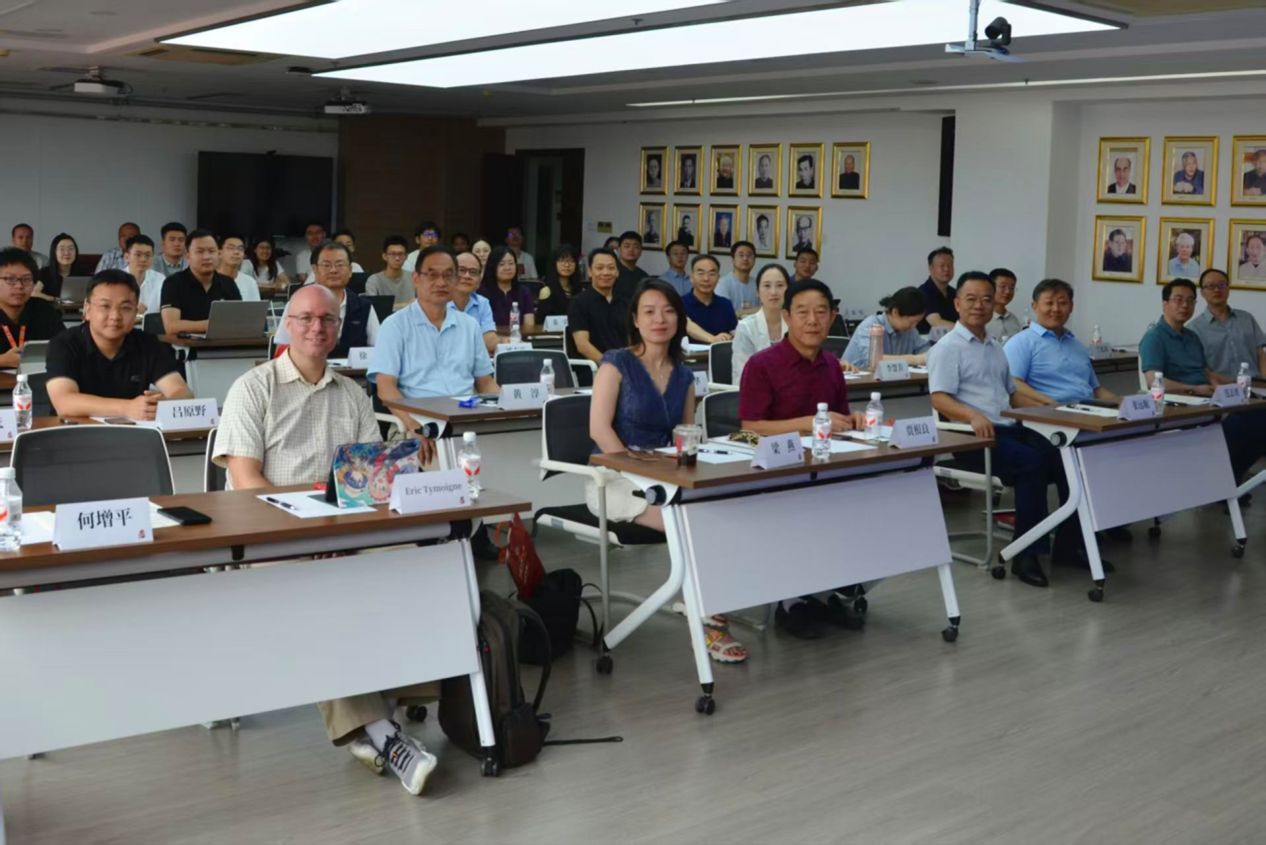
On July 19, 2025, the Seminar on Modern Monetary Theory and the Launch of New Macroeconomics was held in the main hall of the Mingde Building (明德楼) at Renmin University (人民大学)of China. The event was jointly hosted by the School of Economics at Renmin University, the Central Compilation and Translation Press, and the Ministry of Education’s “101 Project” virtual teaching and research office for economic history and history of economic thought, with co-organization by the School of Economics at Beijing Institute of Technology. Over 40 scholars, experts, and students from more than 10 universities and research institutions—including Renmin University, Peking University, the Party School of the Central Committee of CPC (National Academy of Governance), Beijing Institute of Technology, Capital University of Economics and Business, Chinese Academy of Sciences, Chinese Academy of Social Sciences, University of Chinese Academy of Social Sciences, Central University of Finance and Economics, Nankai University, Tianjin University of Finance and Economics, and Nanjing University of Posts and Telecommunications, as well as the Agricultural Bank of China and China Construction Bank—participated in the event. The discussions centered around Modern Monetary Theory (MMT) and current issues in the Chinese economy.
First Session: Book Launch

The book launch was chaired by Professor Fan Zhiyong, Deputy Party Secretary of the School of Economics at Renmin University and professor of macroeconomics. Opening speeches were delivered by L. Randall Wray, one of the founders of MMT, co-author of New Macroeconomics, Professor at the Levy Institute, and Emeritus Professor at University of Missouri-Kansas City, and Zhang Yuanhang, Vice President of Central Compilation and Translation Press. Keynote speeches followed from Professor Jia Genliang of Renmin University and Chair of the Chinese Evolutionary Economics Annual Conference, Professor Yan Liang of Willamette University and research associate at the Levy Institute, and Associate Professor Eric Tymoigne of Lewis & Clark College and research associate at the Levy Institute.
Key Highlights
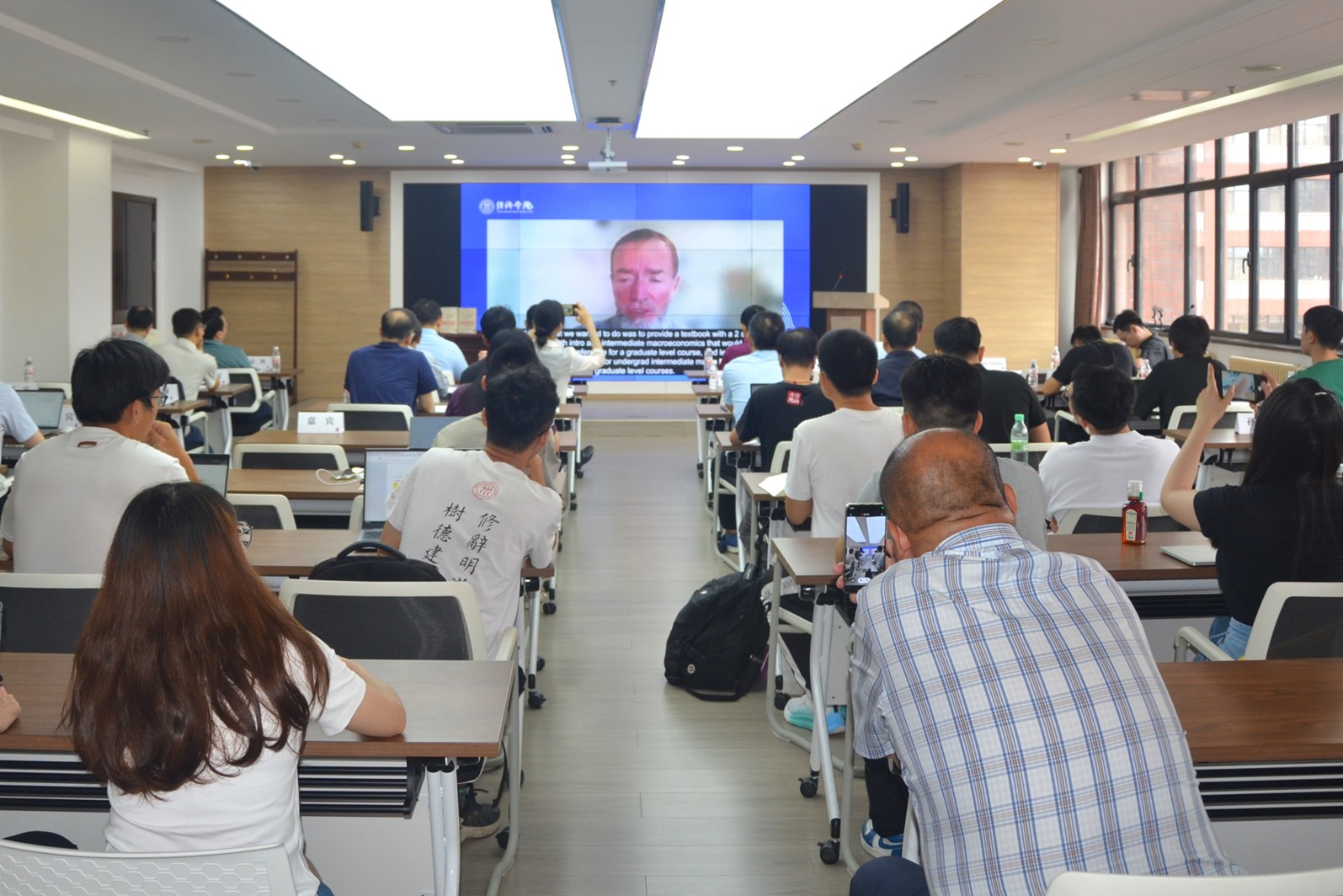 L. Randall Wray’s Remarks
L. Randall Wray’s Remarks
He emphasized that New Macroeconomics is a groundbreaking textbook rooted in Keynes’s economic thought, stock-flow consistent framework, and MMT. He introduced MMT to Chinese readers through three core ideas:
- Sovereign currency issuers can always repay debts using their own fiat currency, unconstrained by traditional budget limits.
- MMT advocates functional finance, focusing on real resource constraints rather than budget deficits.
- Budget outcomes are determined by sectoral balances, not discretion. Policies that stimulate growth may reduce deficits by increasing private savings.
Zhang Yuanhang’s Remarks
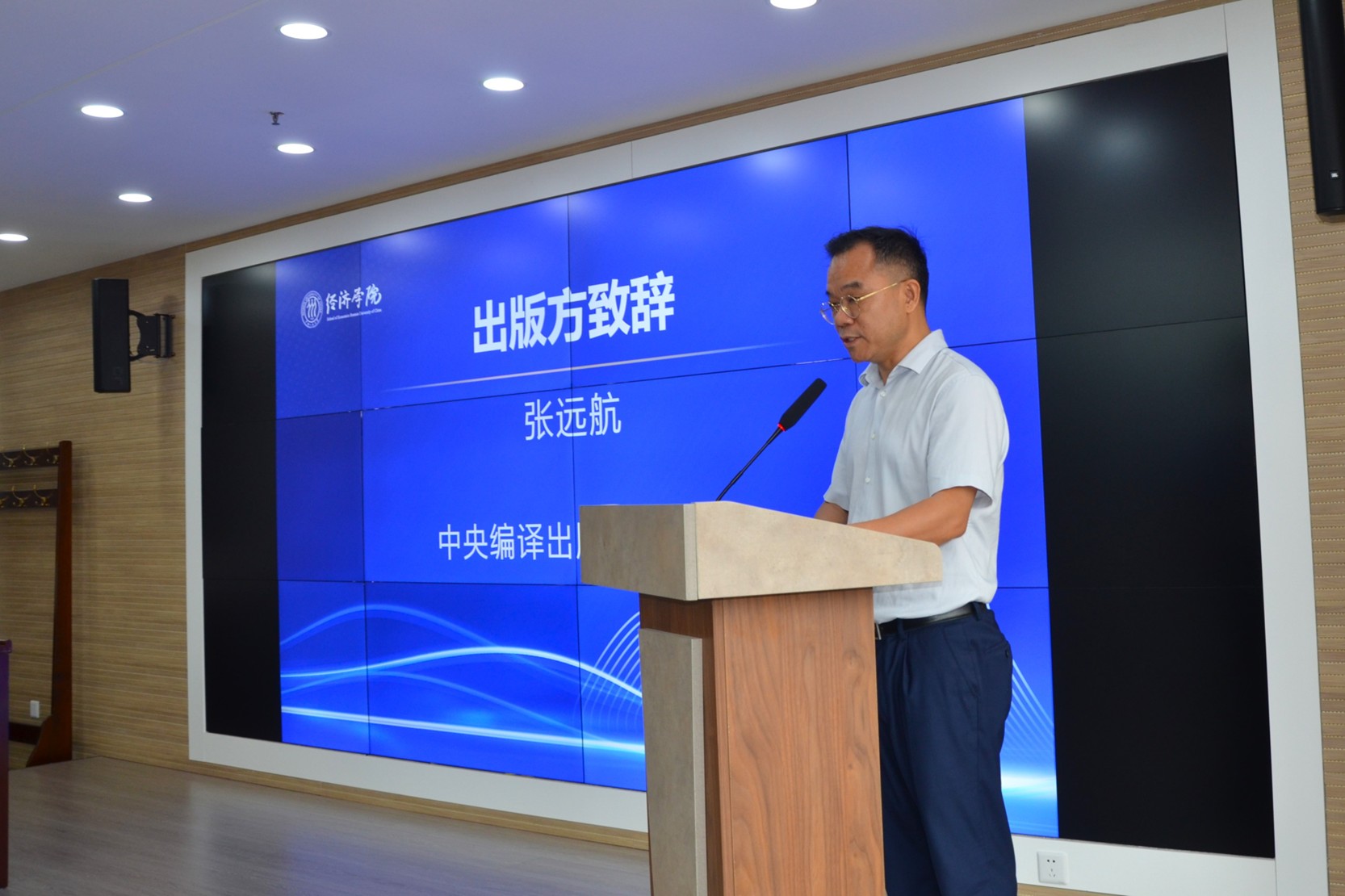 Zhang praised the translation of the nearly one-million-word textbook as a milestone. He highlighted the book’s critical, diverse approach to macroeconomics, bridging gaps left by mainstream theories. Zhang emphasized Central Compilation and Translation Press’s commitment to high-quality academic publications and invited scholars to contribute to their journals.
Zhang praised the translation of the nearly one-million-word textbook as a milestone. He highlighted the book’s critical, diverse approach to macroeconomics, bridging gaps left by mainstream theories. Zhang emphasized Central Compilation and Translation Press’s commitment to high-quality academic publications and invited scholars to contribute to their journals.
Jia Genliang’s Speech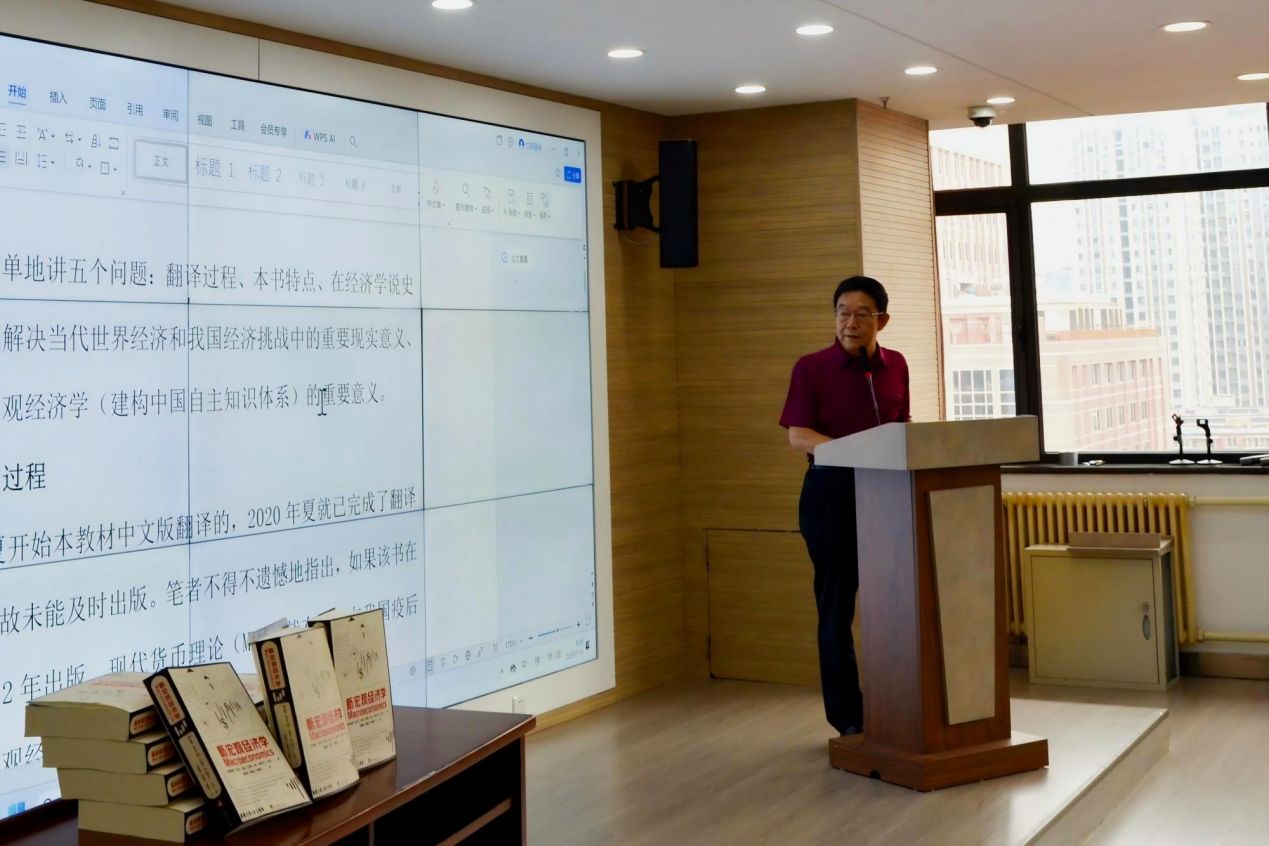
Jia explained the book’s historical significance and its innovative framework, calling it the first macro textbook to combine orthodox and heterodox perspectives, integrating Post Keynesianism, original institutionalism, Marxism, and Darwinian economic traditions. He stressed its relevance for addressing global and Chinese challenges, promoting common prosperity, and shaping a uniquely Chinese macroeconomic framework. Professor Jia pointed out that, unlike the Western tradition where economic thought originated from household management, macroeconomic management is an indigenous Chinese economic idea, which predates the Western equivalent by nearly two thousand years. The long-standing “常平仓” (“chang ping cang”, an ancient Chinese state grain storage and price regulation system) concept and its policy practice have had a direct influence on the development of the job guarantee theory in Modern Monetary Theory (MMT). Furthermore, the “material-driven currency” theory that emerged in China’s anti-Japanese base areas represents a unique contribution to the MMT school of thought. The socialist market economy with Chinese characteristics provides a more favorable institutional environment for implementing policy proposals based on Modern Monetary Theory.
 Yan Liang’s Speech
Yan Liang’s Speech
Yan discussed MMT’s application in developing countries, focusing on global imbalances and balance-of-payment constraints. She pointed out that China and European creditor countries have consistently maintained trade surpluses, while the US has correspondingly experienced trade deficits. MMT offers an interpretation that differs from mainstream economics, arguing that these imbalances reflect the net saving desires of other parts of the world—and that once the rest of the world no longer seeks to hold US dollar assets, these imbalances will disappear. Professor Yan Liang acknowledged that while this explanation offers valuable insights into global economic dynamics, it still has its limitations—for instance, it does not emphasize the role of the current international financial architecture in creating such imbalances. In this regard, she argued that MMT can deepen our understanding of the forces that hinder or promote global development by further developing the concept of monetary hierarchy, which links financial accumulation, trade flows, and macroeconomic dynamics.
She then addressed the academic critique that MMT is not applicable to developing countries, dismissing it as a “straw man” argument. In her view, MMT emphasizes real resource constraints, warns of the risks of foreign-currency borrowing, and advocates for strengthening monetary sovereignty, maximizing the use of domestic resources, and investing strategically to enhance domestic production capacity—thereby reducing dependence on borrowing foreign-currency. As such, MMT offers inspiring insights for developing countries seeking to overcome both demand- and supply-side constraints.
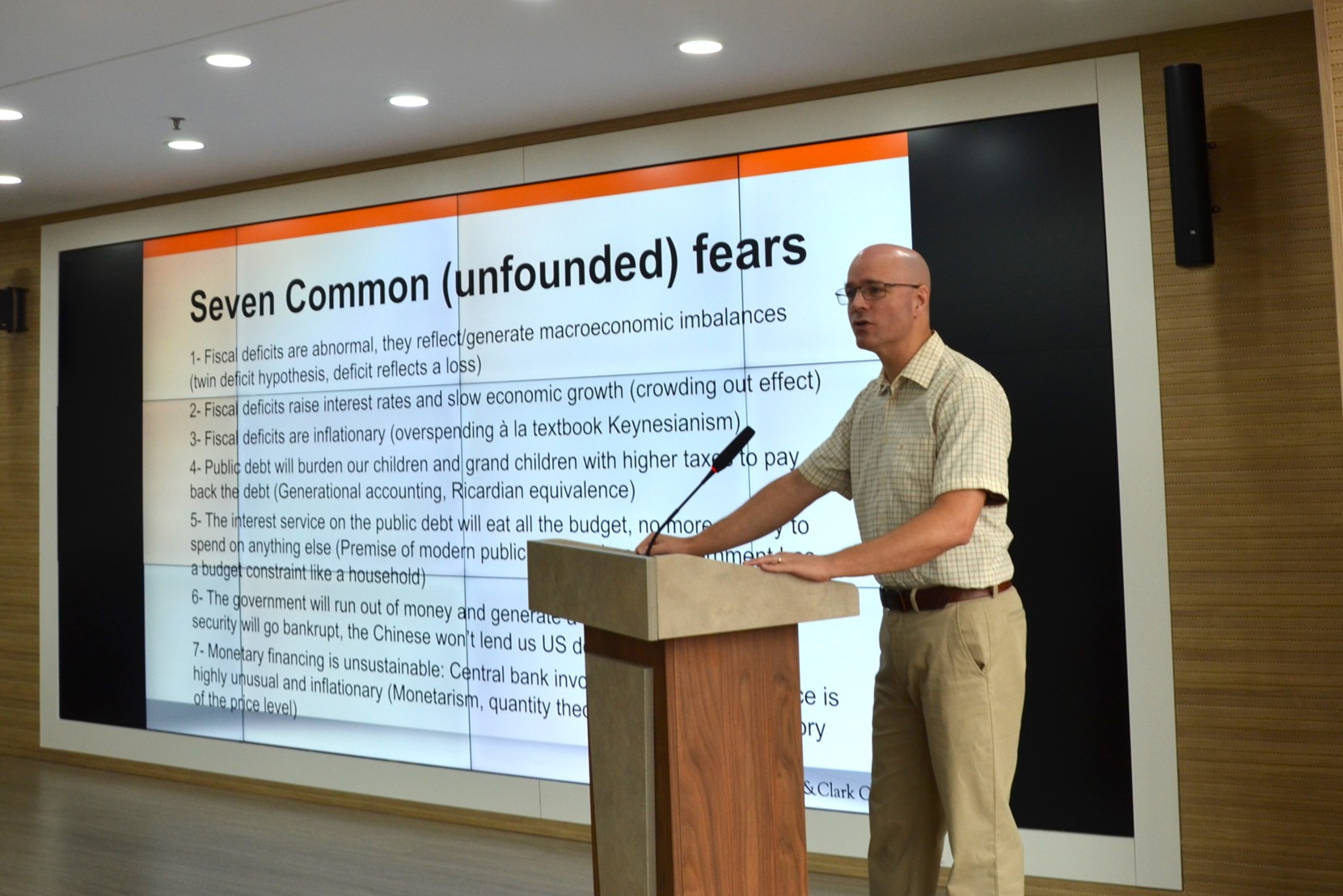 Eric Tymoigne’s Speech
Eric Tymoigne’s Speech
Tymoigne’s keynote speech focused on the macroeconomics of public debt, reinterpreting its nature and sustainability through the lens of MMT. He began by outlining seven common public concerns about government debt. The mainstream policy implication of these views is that achieving fiscal surpluses is seen as essential, and that the formulation of government spending and tax policies should be guided primarily by their impact on public debt. According to this view, any increase in government spending must be offset by either spending cuts elsewhere or higher taxes.
Professor Eric Tymoigne, however, challenged these traditional assumptions using empirical data from the US. He presented seven factual characteristics about public debt:
- Deficits are normal;
- Public deficits correspond to private sector surpluses;
- There is no correlation between fiscal balance and interest rates;
- Deficits are not inherently inflationary;
- Deficits help stabilize the economy;
- The share of interest payments in total government spending is unrelated to the level of public debt;
- A sovereign government should not be compared to a household.
Based on these insights, Professor Tymoigne explained the policy implications of MMT’s view on public debt: governments should design their tax structures and spending priorities based on economic feasibility and policy impact, not arbitrary debt limits. The goal should be to achieve public purposes, such as addressing unemployment, inequality, and other socio-economic challenges.
Second Session: Academic Panel Discussion
Chaired by Associate Professor Li Lili, Director of the History of Economic Thought Teaching and Research Office at Renmin University, the panel featured:
- Professor Yuan Hui (Party School of the Central Committee) analyzed digital currencies like Bitcoin and stablecoins from a Post Keynesian endogenous money perspective. He argues that Bitcoin’s pursuit of “complete decentralization” and “trustlessness” runs counter to the very nature of money, making it unlikely to become a true currency. Instead, it more closely resembles a speculative crypto asset. In contrast, stablecoins, which are backed by real asset reserves and operate within centralized organizational and managerial structures, have the potential to function as actual money and may become an important supplement to the existing monetary system. However, the future development of stablecoins remains uncertain and depends on multiple factors.
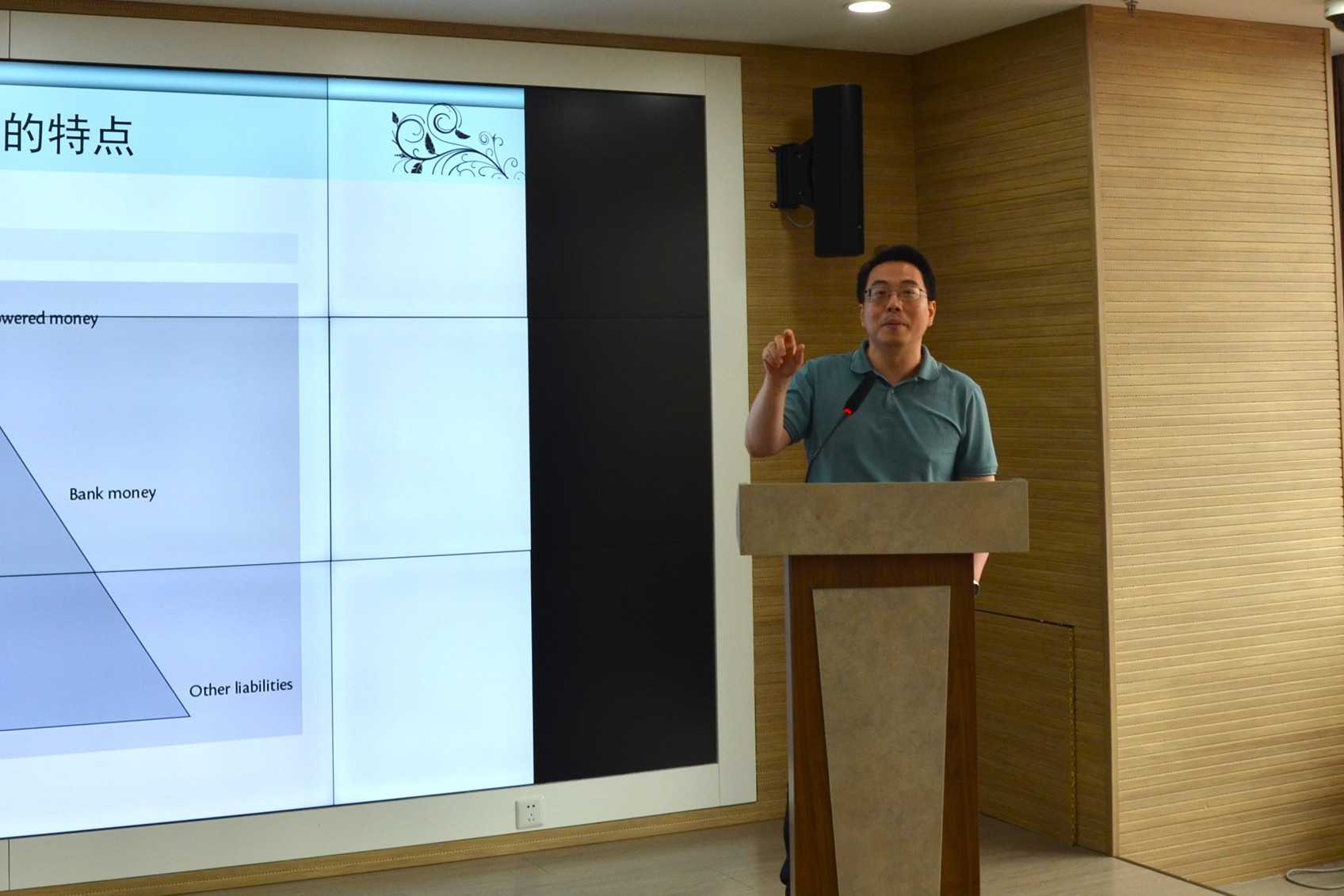
- Professor Wang Na (Peking University) compared MMT and Marxist theory, noting fundamental differences in their views on money’s origin. She argues that MMT views money as a creature of the state, whose value is derived from the state’s abstract fiscal capacity and the hierarchical system of regulation that supports it. In contrast, Marxism sees money as a spontaneous product of the exchange process, functioning as a universal equivalent. Despite this fundamental difference, the two theories converge on the concept of money’s endogeneity, and there is room for mutual learning between them. For example, MMT’s insights into fiat and credit money can offer valuable supplements to Marxist monetary analysis. Finally, Professor Wang emphasized that promoting the integrated development of these two monetary theories can contribute to the improvement of China’s socialist market economy system with Chinese characteristics.
- Associate Professor Li Huiqing (Central University of Finance and Economics) simulated China’s employment guarantee programs using a six-sector macroeconomic model, including the household sector, production enterprises, commercial banks, central bank, government, and foreign sector, with the real estate industry additionally incorporated. Professor Li designed nine policy simulation scenarios to evaluate the dynamic impacts of different policy paths on income and wealth distribution, aggregate demand structure, and macroeconomic stability over the medium and long term. The results showed that a job guarantee program offers the greatest advantage in improving income and wealth inequality, while also delivering multiple policy benefits including price stability, economic growth promotion, and risk prevention. Based on these findings, Professor Li proposed that future fiscal policy design should systematically consider and substantively promote a structural fiscal path centered on job guarantee programs.
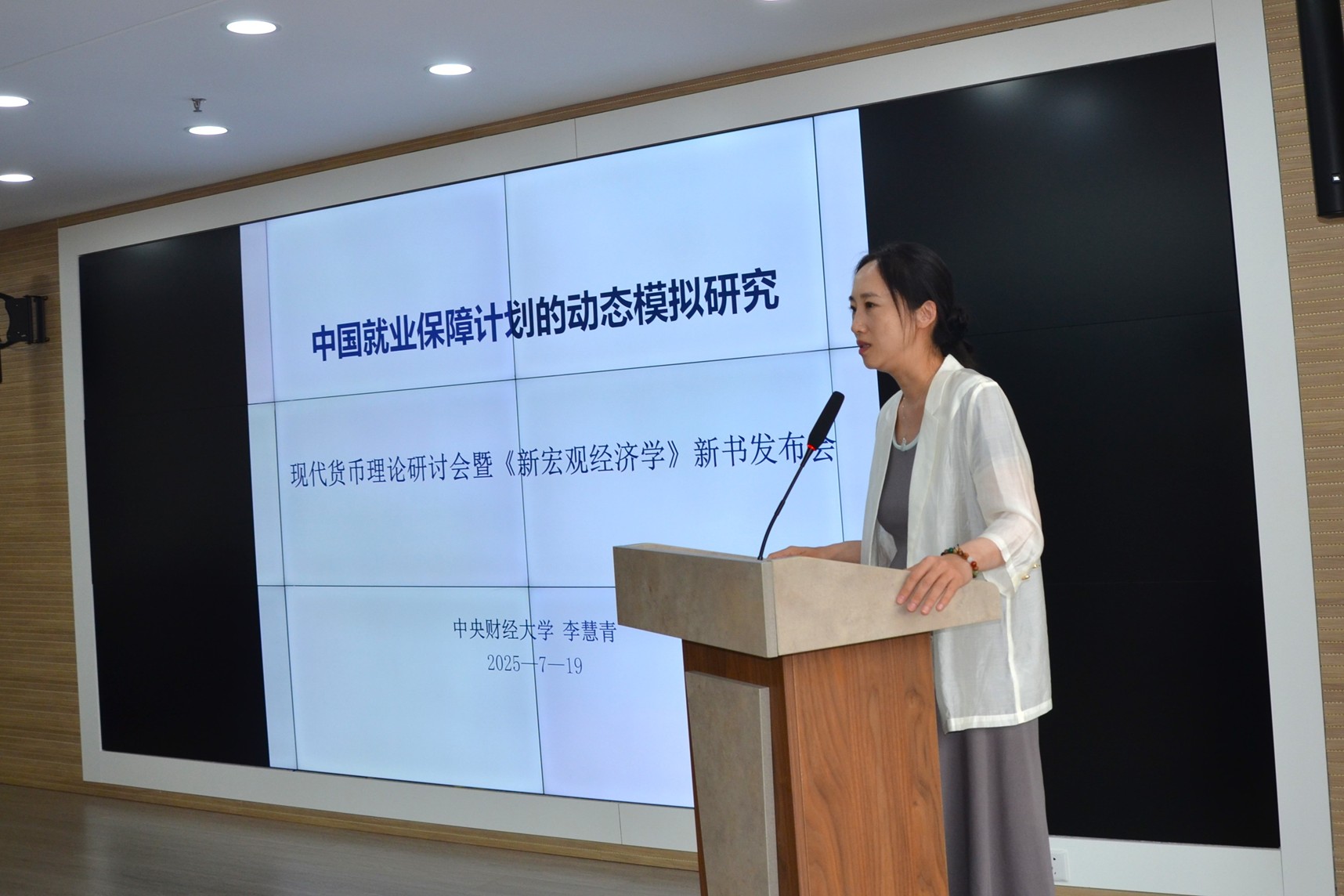
- Assistant Professor Lan Wushuang (Capital University of Economics and Business) argued that the “wage-led recovery” theory of Post Keynesian economics views wage stagnation as a fundamental obstacle to economic recovery and advocates for reconstructing a growth model driven by wage increases. Professor Lan combined key insights from MMT with Kalecki’s effective demand theory to conduct a theoretical analysis of this issue. He further extended this into the Marx-Keynes-Schumpeter problem, suggesting that future discussions may need to explore issues such as the stages of national economic development, international division of labor, choices in national development strategies, and the new Listian functional fiscal theory. This aims to provide theoretical support for China to build a new development pattern and facilitate the smooth operation of the “internal circulation” (内循环).
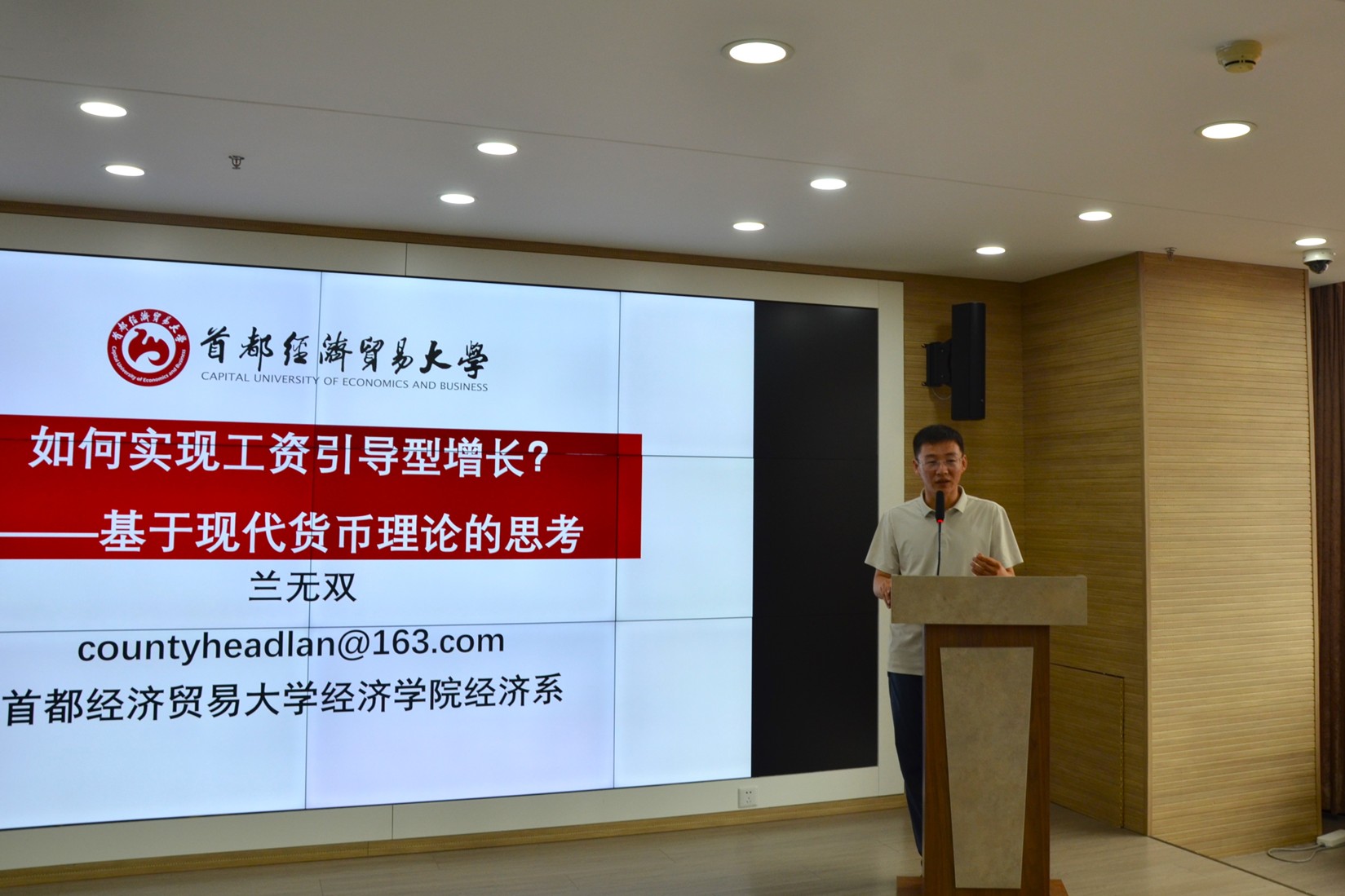
- Assistant Professor He Zengping (Beijing Institute of Technology) examined China’s economic growth model, using macro, meso, and micro data combined with the sectoral balance sheet identity of MMT. Empirical analysis shows that China’s growth model is characterized by investment dominance. This is reflected in the real economy, where investment consistently accounts for the largest share of total demand, and in the monetary flow, where the non-financial corporate sector remains in a persistent deficit. Suppressing investment, without alternative sources of demand growth, would reduce profits in the non-financial corporate sector, thereby increasing its financial fragility. Therefore, Professor He argues, insufficient aggregate demand and financial instability are two sides of the same issue, with the aggregate demand gap posing a major challenge for future Chinese economic reforms.
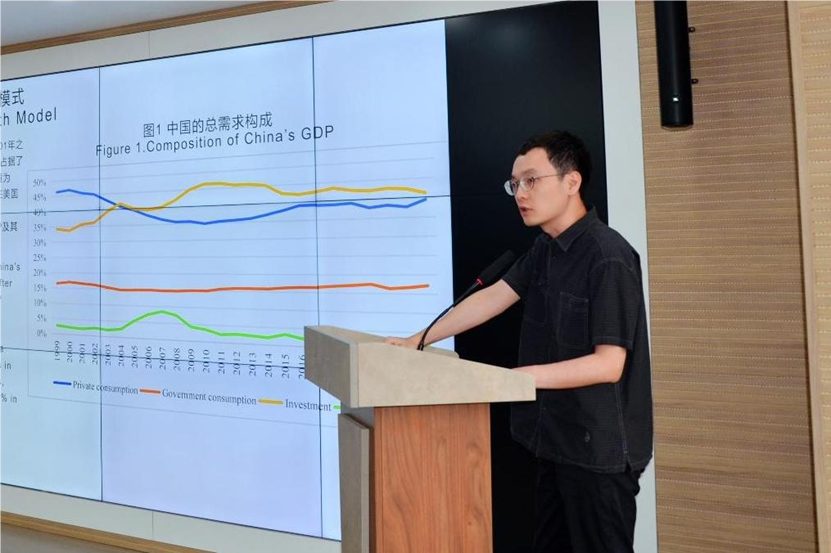
Conclusion
The Chinese translation and publication of New Macroeconomics marks a significant step in developing MMT-based educational resources. Experts agreed that MMT offers crucial insights for understanding and addressing domestic and international challenges amidst shifting global dynamics. There is a growing need to further explore and adapt MMT within the context of China’s socialist market system to build a self-sufficient economic knowledge framework.

